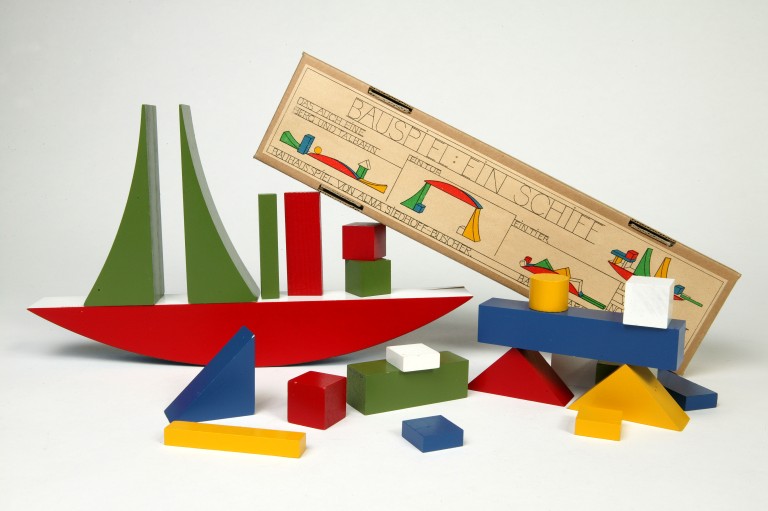
Set of 1923 Bauspiel construction blocks by Alma Siedhoff-Buscher (1899-1944). These are in fact already in the V and A collection: this particular set was manufactured in Switzerland in 1988 and seems to have been given to the Museum of Childhood pretty well straightaway. Stephen Hayward calls this a ‘Bauhaus toy’ and asks: to what extent do toys like this ‘privilege standardisation, geometry and simplification, the principles we associate with industrial production and a modernist vision of the future? But is there an alternative, a genuinely intuitive toy?’ (Sometimes we put a set of 1907 German building blocks in the window in Lamb’s Conduit Street. They were inherited from an ancestor and have been played with by three generations. But do they have a greater influence than one thinks? Do they create people interested in standardisation and simplification? Surely not. But it does make one think – what’s in a toy? How much influence does it have? Are a child’s choices, or the direction it takes in life, influenced from the very earliest moment by the toys he or she is given to play with? Interesting…)
